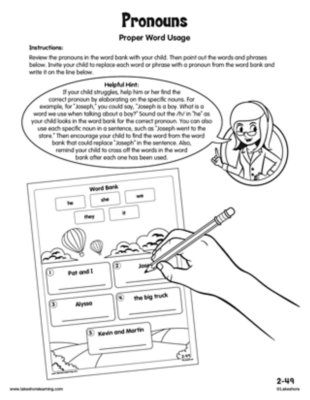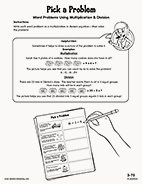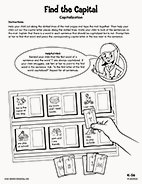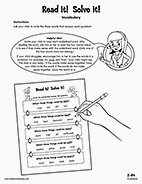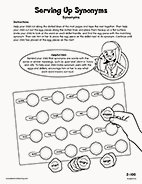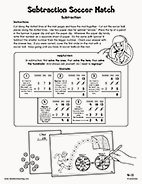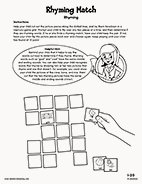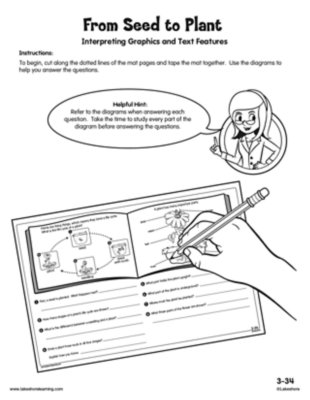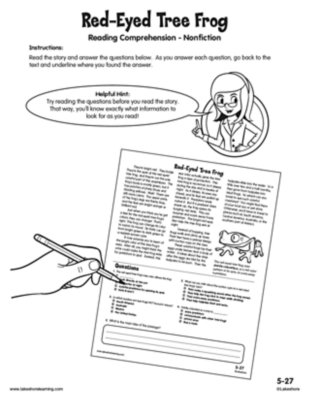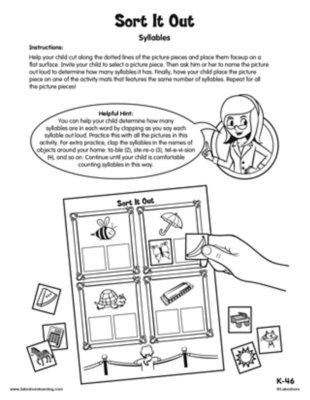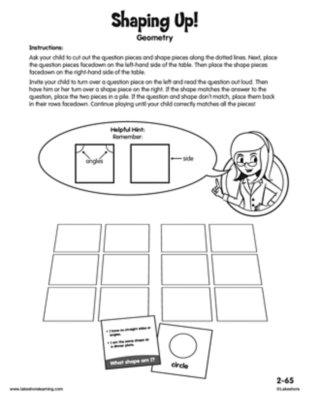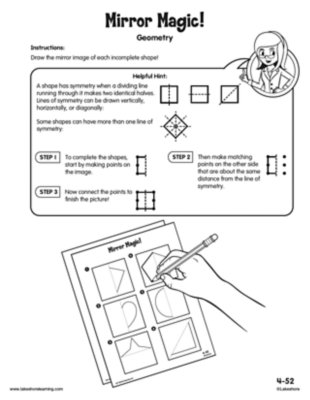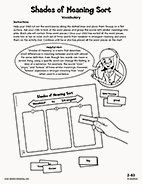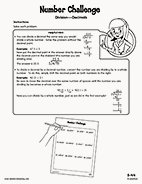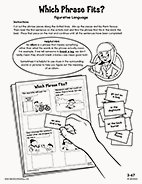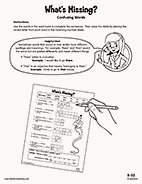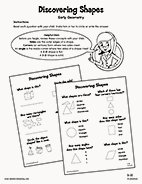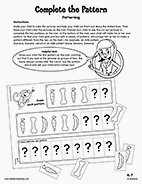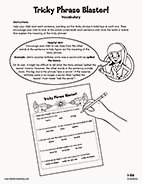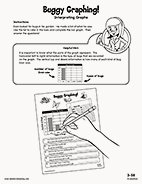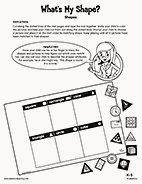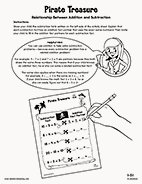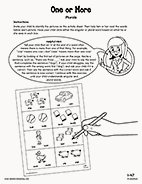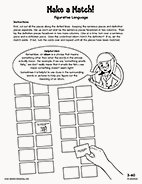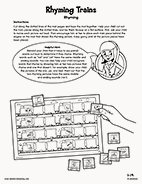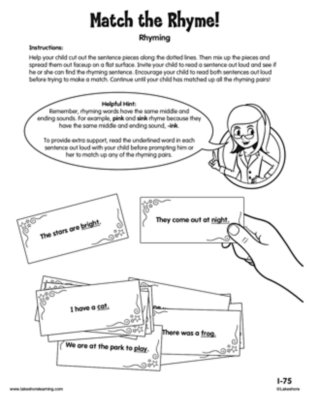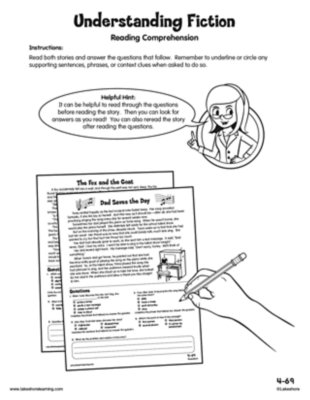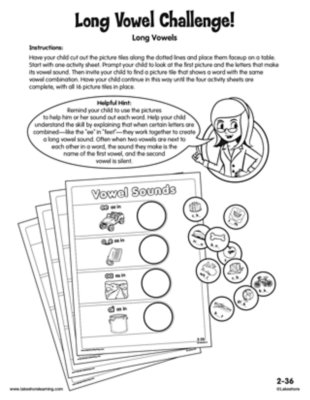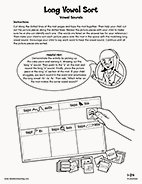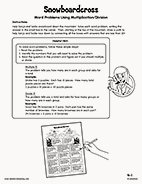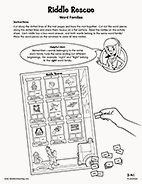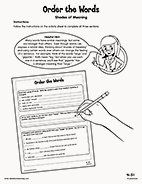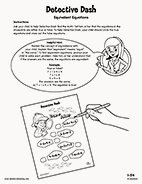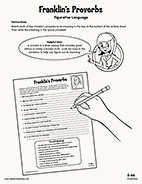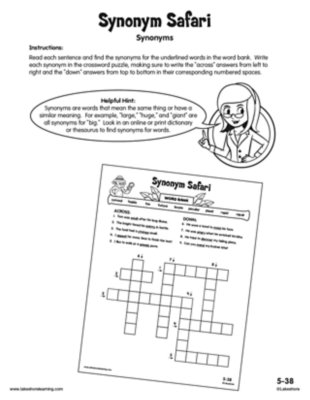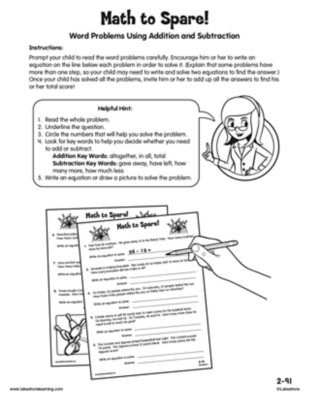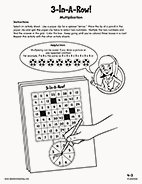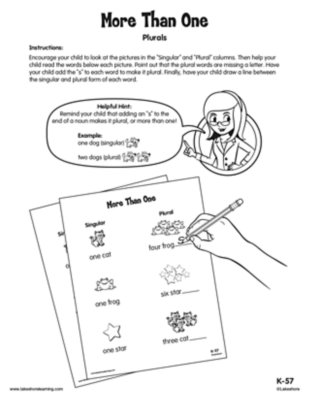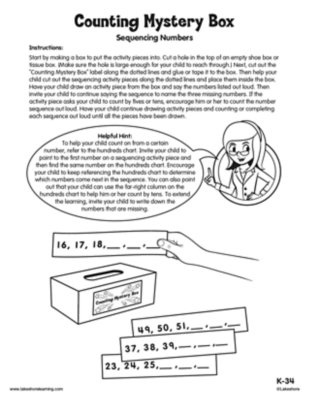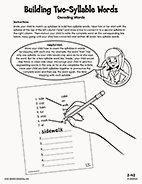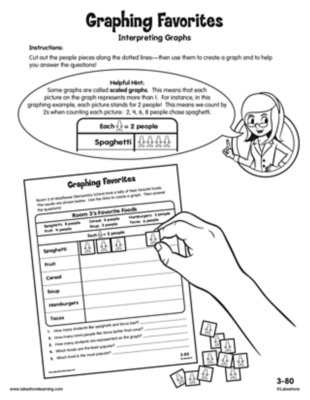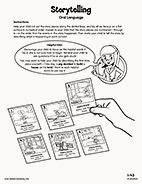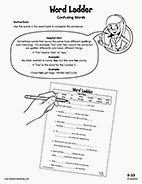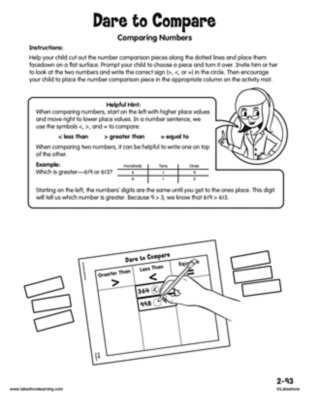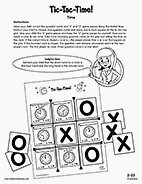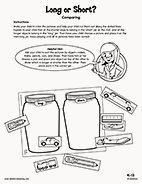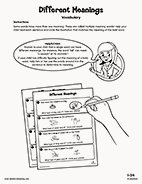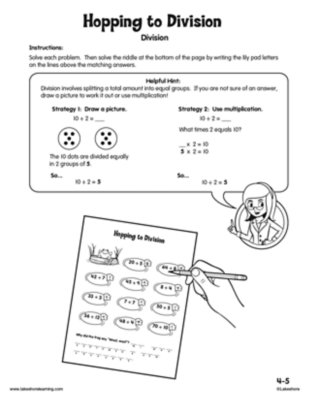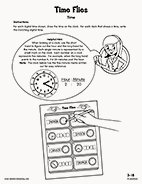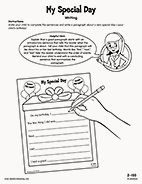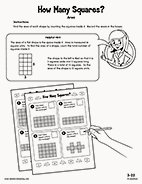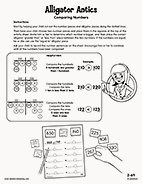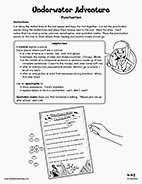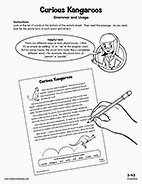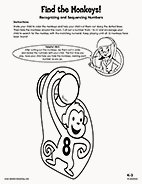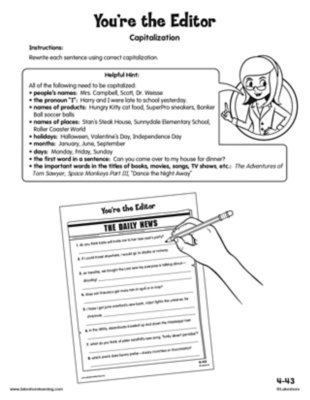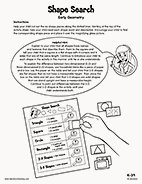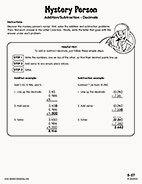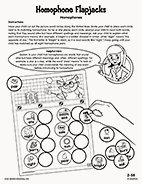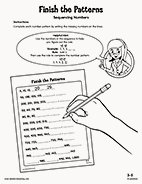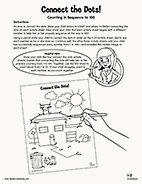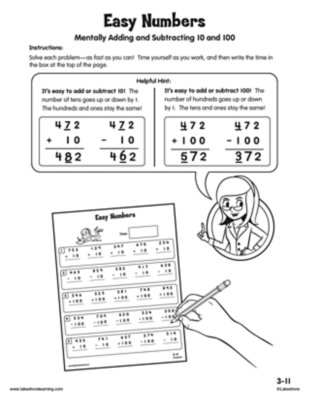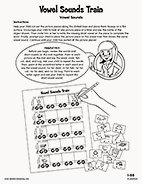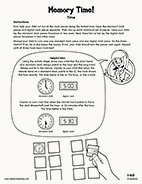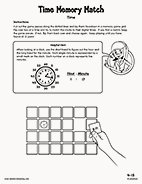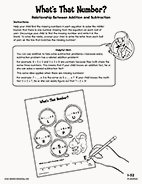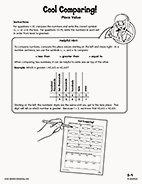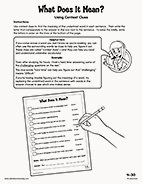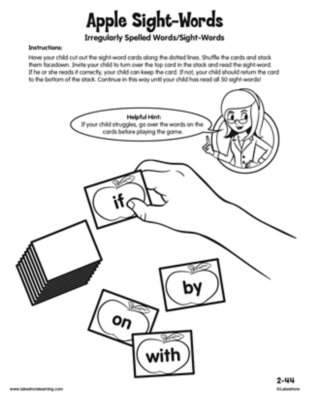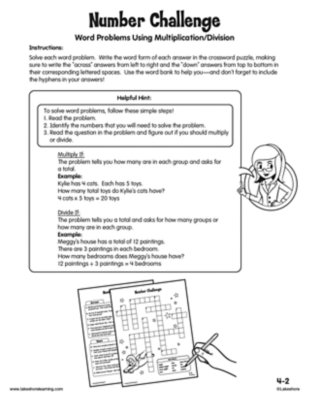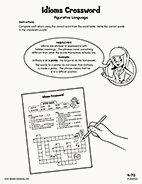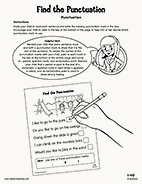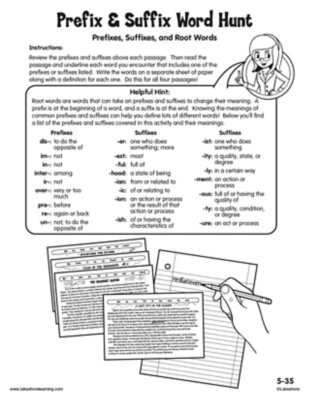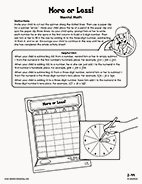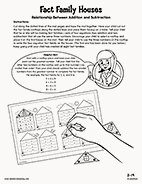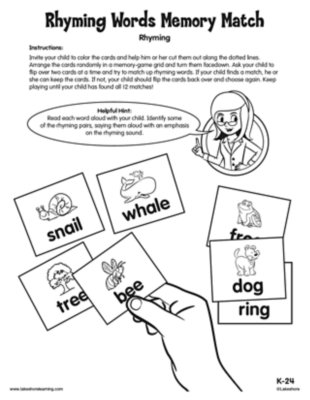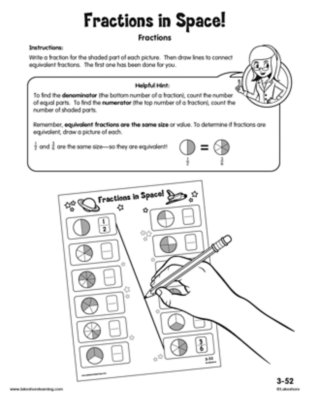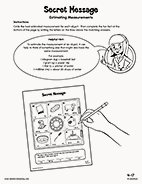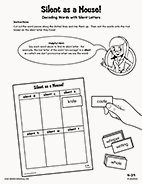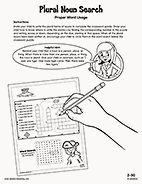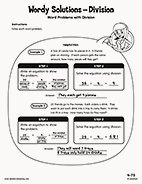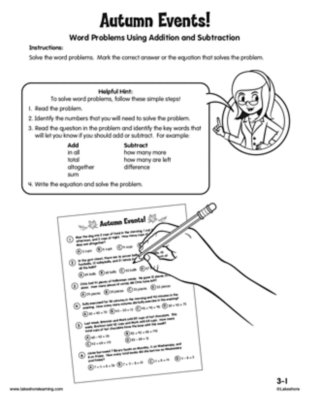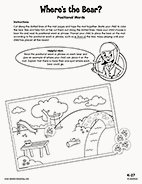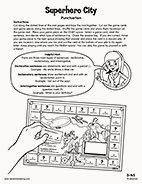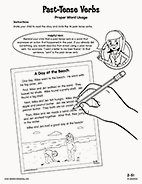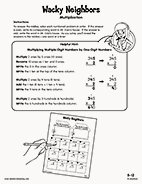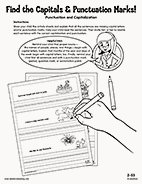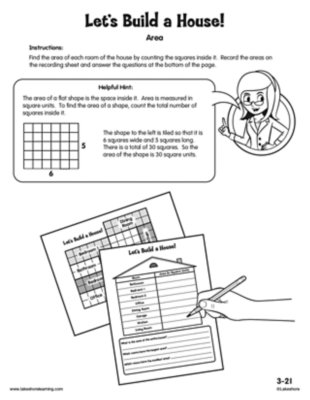Narrow by Grade
Grade
0 results for "sand" , here are results for "and"
When entering second grade, your child should be able to correctly use pronouns, singular and plural words, and past-, present- and future-tense words in sentences.
View worksheetDuring third grade, your child will learn to solve word problems involving multiplication and division within 100.
View worksheetDuring kindergarten, your child will learn that sentences begin with a capital letter and that the word “I” is also capitalized.
View worksheetDuring second grade, your child will build vocabulary and learn to distinguish shades of meaning among closely related words, such as “toss,” “throw” and “hurl” or “thin,” “slender” and “skinny.”
View worksheetDuring second grade, your child will learn to identify synonyms of words and use the synonyms in sentences.
View worksheetWhen entering fourth grade, your child should be able to easily add and subtract within 1,000.
View worksheetWhen entering first grade, your child should be able to recognize and create rhyming sounds.
View worksheetWhen entering third grade, your child should be able to use text features—including diagrams, bold print, glossaries and indexes—to locate facts in informational texts, such as newspapers, magazines or science books.
View worksheetWhen entering second grade, your child should be able to subtract within 20 fluently. For example, 18 — 5 = 13 and 20 — 6 = 14.
View worksheetWhen entering fifth grade, your child should be able to read, analyze and understand level-appropriate nonfiction reading passages, finding the main idea and important details, comprehending key words and phrases, comparing different accounts of the same event or topic and making inferences.
View worksheetDuring second grade, your child will learn to add up to four two-digit numbers and fluently add and subtract within 100, using regrouping as needed. For example, 100 — 12 = 88.
View worksheetDuring kindergarten, your child will learn to count and say the syllables in spoken words. For example, your child should understand that “kitten” has two syllables: kit•ten.
View worksheetWhen entering fourth grade, your child should be able to recognize common features of nonfiction text, such as diagrams, graphs and photo captions. Your child should also be able to use those features to locate information.
View worksheetDuring second grade, your child will learn to recognize shapes and identify their attributes, such as how many sides, angles or vertices (corners) they have. Your child will also learn to divide circles and rectangles into halves, thirds and fourths.
View worksheetDuring fourth grade, your child will learn to identify lines and angles, understand symmetry and classify shapes based on their lines and angles. For example, your child will be able to classify right triangles by seeing that they have a 90-degree angle.
View worksheetDuring second grade, your child will build vocabulary and learn to distinguish shades of meaning among closely related words, such as “toss,” “throw” and “hurl” or “thin,” “slender” and “skinny.”
View worksheetDuring fifth grade, your child will learn to multiply and divide decimals to the hundredths place. For example, 212 x 0.45 = 95.40.
View worksheetDuring third grade, your child will learn to understand figurative language, such as idioms, and distinguish between the literal and nonliteral meanings of words. For example, “It was a piece of cake!”
View worksheetWhen entering fifth grade, your child should be able to correctly use frequently confused words, such as “to” and “two” or “there” and “their.”
View worksheetWhen entering first grade, your child should be able to identify 2-D (flat) and 3-D (solid) shapes, find shapes in the real world and compare shapes based on their number of sides or corners.
View worksheetWhen entering kindergarten, your child should be able to copy simple patterns, such as ABAB, and determine what comes next in the pattern.
View worksheetDuring first grade, your child will learn to figure out the meanings of new words and multiple-meaning words based on the context in which they are used.
View worksheetDuring third grade, your child will learn to use bar graphs to solve one- and two-step problems asking “how many more” and “how many less.”
View worksheetWhen entering kindergarten, your child should be able to identify simple shapes—such as squares, circles, triangles and rectangles—and describe objects in the real world using shape names.
View worksheetDuring first grade, your child will learn that addition and subtraction are closely related. For example, your child will solve the problem 10 — 2 = ? by understanding that 8 + 2 = 10.
View worksheetWhen entering first grade, your child should be able to form regular plural nouns when speaking by adding -s or -es. For example, “dog/dogs” and “wish/wishes.”
View worksheetDuring third grade, your child will learn to understand figurative language, such as idioms, and distinguish between the literal and nonliteral meanings of words. For example, “It was a piece of cake!”
View worksheetWhen entering kindergarten, your child should be able to compare objects and describe their similarities and differences, including distinguishing by color, size, weight or shape. Your child should also be able to describe objects using the correct words, such as “big,” “small,” “short” and “tall.”
View worksheetWhen entering fifth grade, your child should be able to identify lines and angles, measure angles, understand symmetry and classify shapes based on their lines and angles. For example, your child should be able to classify right triangles by seeing that they have a 90-degree angle.
View worksheetWhen entering first grade, your child should be able to recognize and create rhyming sounds.
View worksheetDuring first grade, your child will learn to recognize common spelling patterns, such as those found in rhyming words like “cat/rat/bat” and “run/fun/sun.”
View worksheetDuring fourth grade, your child will read and analyze level-appropriate stories, dramas, poems and informational texts, exploring elements such as main ideas, key details, point of view, making inferences and the author’s purpose.
View worksheetWhen entering second grade, your child should understand that final -e and common vowel teams can be used to make long vowel sounds. For example, your child can recognize that the “oa” and “o_e” teams in the words “coat” and “rope” contain long “o” sounds. Your child should also be able to spell words using these vowel teams.
View worksheetWhen entering first grade, your child should know the long and short vowel sounds for the five major vowels (a, e, i, o and u).
View worksheetWhen entering fourth grade, your child should know how to solve word problems involving multiplication and division within 100.
View worksheetWhen entering third grade, your child should be able to use common spelling patterns to decode and spell words easily, such as “cart,” “chart” and “smart.”
View worksheetWhen entering fourth grade, your child should be able to distinguish between shades of meaning among related words, such as “wondered,” “suspected,” “believed” and “knew.”
View worksheetDuring first grade, your child will learn what the equal sign means, identify whether equations are true or false and complete equations by finding missing numbers.
View worksheetDuring fifth grade, your child will learn to interpret examples of figurative language, including similes and metaphors, based on the context in which they are used. Your child will also learn to recognize and explain the meaning of common idioms and familiar sayings and expressions, such as, “A bird in the hand is worth two in the bush.”
View worksheetWhen entering fifth grade, your child should be able to understand words by relating them to their opposites (antonyms) and to words with similar but not identical meanings (synonyms).
View worksheetDuring fifth grade, your child will learn to multiply and divide decimals to the hundredths place. For example, 212 x 0.45 = 95.40.
View worksheetDuring second grade, your child will learn to solve one- and two-step word problems involving addition and subtraction within 100.
View worksheetWhen entering fourth grade, your child should be able to quickly and easily solve multiplication and division facts within 100 without having to count. For example, 9 x 9 = 81 and 56 ÷ 8 = 7.
View worksheetDuring kindergarten, your child will learn to form regular plural nouns when speaking by adding -s or -es. For example, “dog/dogs” and “wish/wishes.”
View worksheetDuring kindergarten, your child will learn to count in sequence from 1 to 100 by ones (1, 2, 3, 4…) and tens (10, 20, 30, 40…).
View worksheetWhen entering second grade, your child should be able to decode—or read and understand—regularly spelled one- and two-syllable words, such as “wet” or “seven.”
View worksheetDuring third grade, your child will learn to use bar graphs to solve one- and two-step problems asking “how many more” and “how many less.”
View worksheetDuring third grade, your child will learn to read and analyze level-appropriate stories, dramas, poems and informational texts, identifying elements such as key events and details, the main idea and the theme or moral.
View worksheetWhen entering first grade, your child should be able to describe familiar people, places, things and events and express their thoughts, feelings and ideas clearly.
View worksheetWhen entering fifth grade, your child should be able to correctly use frequently confused words, such as “to” and “two” or “there” and “their.”
View worksheetDuring second grade, your child will learn to determine if a three-digit number is greater than, less than or equal to another three-digit number and use the >, < and = symbols to show the answer.
View worksheetWhen entering second grade, your child should be able to tell and write time in hours and half-hours using clock faces and digital clocks.
View worksheetWhen entering kindergarten, your child should be able to compare objects and describe their similarities and differences, including distinguishing by color, size, weight or shape. Your child should also be able to describe objects using the correct words, such as “big,” “small,” “short” and “tall.”
View worksheetWhen entering first grade, your child should be able to figure out the meanings of unfamiliar words and multiple-meanings words that they encounter in kindergarten-level texts.
View worksheetWhen entering fourth grade, your child should be able to quickly and easily solve multiplication and division facts within 100 without having to count. For example, 9 x 9 = 81 and 56 ÷ 8 = 7.
View worksheetWhen entering third grade, your child should be able to tell and write time from clock faces and digital clocks to the nearest five minutes. For example, 8:05 a.m. or 2:15 p.m.
View worksheetWhen entering second grade, your child should be able to write short opinion pieces, informative texts and narratives (stories).
View worksheetWhen entering third grade, your child should be able to divide a rectangle into rows and columns of same-size squares and count to find the total number of them.
View worksheetDuring second grade, your child will learn to determine if a three-digit number is greater than, less than or equal to another three-digit number and use the >, < and = symbols to show the answer.
View worksheetWhen entering fourth grade, your child should remember to capitalize the appropriate words in titles, such as the names of books and movies. Your child should also remember to use commas in written addresses and with quotation marks to show when someone is speaking.
View worksheetWhen entering third grade, your child will be expected to know many rules of English grammar and usage, including how to correctly use adjectives, adverbs, pronouns, past-tense verbs and plural words.
View worksheetWhen entering kindergarten, your child should be able to recognize numbers 1 to 20 and count them in sequence.
View worksheetWhen entering fourth grade, your child should remember to capitalize the appropriate words in titles, such as the names of books and movies. Your child should also remember to use commas in written addresses and with quotation marks to show when someone is speaking.
View worksheetDuring kindergarten, your child will learn to identify 2-D (flat) and 3-D (solid) shapes, find shapes in the real world and compare shapes based on their number of sides or corners.
View worksheetDuring fifth grade, your child will learn to add and subtract decimals to the hundredths place. For example, 2.32 + 3.41 = 5.73.
View worksheetWhen entering second grade, your child should be able to figure out the correct meanings of grade-appropriate homophones—words that sound the same but have different meaningss. For example, “to” and “two” or “eye” and “I.”
View worksheetWhen entering third grade, your child should be able to count and sequence numbers within 1,000 and skip-count by 5s, 10s and 100s.
View worksheetWhen entering first grade, your child should be able to count to 100 by ones (1, 2, 3, 4…) and tens (10, 20, 30, 40…).
View worksheetWhen entering third grade, your child should be able to mentally add 10 or 100 to any given number from 100 to 900 without having to write down the problems and work them out. For example, 156 + 10 = 166 and 234 + 100 = 334.
View worksheetDuring first grade, your child will learn to distinguish between short and long vowels in spoken one-syllable words, such as the short “a” in “cap” and the long “a” in “cape.” Your child will also learn that final -e and common vowel teams can be used to make long vowel sounds, such as the long “o” in “rope” and “coat.”
View worksheetDuring first grade, your child will learn to tell and write time in hours and half-hours using clock faces and digital clocks.
View worksheetWhen entering fourth grade, your child should know how to tell and write time to the nearest minute. Your child should also be able to solve problems in which time has elapsed. For example, “The movie started at 5:15 p.m. It was 1 hour and 20 minutes long. What time did the movie end?”
View worksheetDuring first grade, your child will learn that addition and subtraction are closely related. For example, your child will solve the problem 10 — 2 = ? by understanding that 8 + 2 = 10.
View worksheetWhen entering fifth grade, your child should be able to compare and round multidigit numbers. Your child should also be able to read and write multidigit numbers in number, word and expanded form. For example, 765; seven hundred sixty-five; 700 + 60 + 5.
View worksheetWhen entering fourth grade, your child should be able to use clues within a sentence to figure out the meaning of an unfamiliar word or phrase. For example, in the following sentence, the underlined portion provides a clue to what the word “aviary” means: The zoo’s aviary was filled with owls, bluebirds, parrots, parakeets and cuckoos.
View worksheetWhen entering second grade, your child should recognize and read common grade-appropriate sight-words and words with irregular spellings, such as “said,” “come” and “does.”
View worksheetWhen entering fourth grade, your child should know how to solve word problems involving multiplication and division within 100.
View worksheetDuring fourth grade, your child will learn to understand the meaning of figurative language, including similes, metaphors and idioms.
View worksheetWhen entering first grade, your child should understand that sentences begin with a capital letter and that the word “I” is also capitalized. Your child should also be able to recognize and name the punctuation marks at the end of sentences, including periods, question marks and exclamation points.
View worksheetWhen entering fifth grade, your child should be able to use common, grade-appropriate Greek and Latin prefixes, suffixes and roots to figure out the meaning of a word. For example, “telegraph,” “photograph” and “autograph” all contain the Greek root “graph,” which refers to something that is written or drawn.
View worksheetDuring second grade, your child will learn to mentally subtract multiples of 10 from three-digit numbers without having to write down the problems and work them out. For example, 800 — 10 = 790.
View worksheetWhen entering second grade, your child should understand that addition and subtraction are related. Your child should also be able to determine the missing number in an addition or subtraction equation. For example, 6 + __ = 8.
View worksheetWhen entering kindergarten, your child should be able to recognize and match words that rhyme.
View worksheetDuring third grade, your child will learn to compare fractions and represent whole numbers as fractions. For example, 4/4 = 1 whole and 3/1 = 3 wholes.
View worksheetWhen entering fourth grade, your child should be able to estimate liquid volumes and masses of objects using grams, kilograms and liters.
View worksheetWhen entering fourth grade, your child should be able to decode and spell multisyllable words and grade-appropriate irregularly spelled words.
View worksheetWhen entering second grade, your child should be able to correctly use pronouns, singular and plural words, and past-, present- and future-tense words in sentences.
View worksheetDuring fourth grade, your child will solve word problems that involve multiplication and division.
View worksheetWhen entering third grade, your child should be able to solve one-step and two-step word problems involving addition and subtraction within 100.
View worksheetWhen entering kindergarten, your child should be able to describe the positions of objects and shapes using positional words and phrases, such as “in front of,” “behind,” “over,” “under” and “next to.”
View worksheetWhen entering third grade, your child should remember to capitalize holidays, product names and geographic names. Your child should also use commas in the greetings and closings of letters and use apostrophes in contractions and possessives, such as “Jeff’s bike.”
View worksheetWhen entering second grade, your child should be able to correctly use pronouns, singular and plural words, and past-, present- and future-tense words in sentences.
View worksheetWhen entering fifth grade, your child should be able to multiply a number with up to four digits by a one-digit number and a two-digit number by another two-digit number. Your child should also be able to divide numbers with up to four digits by a one-digit number, including problems with remainders.
View worksheetWhen entering second grade, your child should remember to capitalize dates and people’s names. Your child will also be expected to use punctuation at the ends of sentences. Your child should also use commas in dates and to separate words in a series. For example, “I like apples, bananas, and strawberries.”
View worksheetWhen entering third grade, your child should be able to divide a rectangle into rows and columns of same-size squares and count to find the total number of them.
View worksheetWhen entering third grade, your child should be able to mentally add 10 or 100 to any given number from 100 to 900 without having to write down the problems and work them out. For example, 156 + 10 = 166 and 234 + 100 = 334.
View worksheet